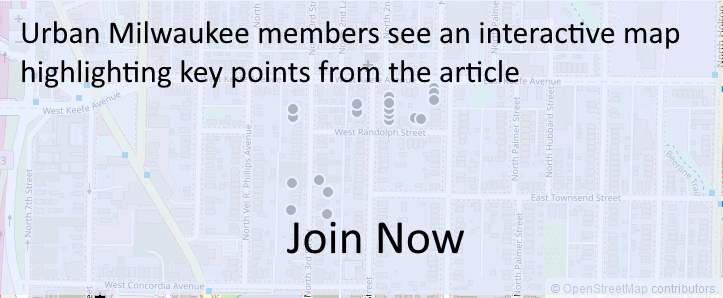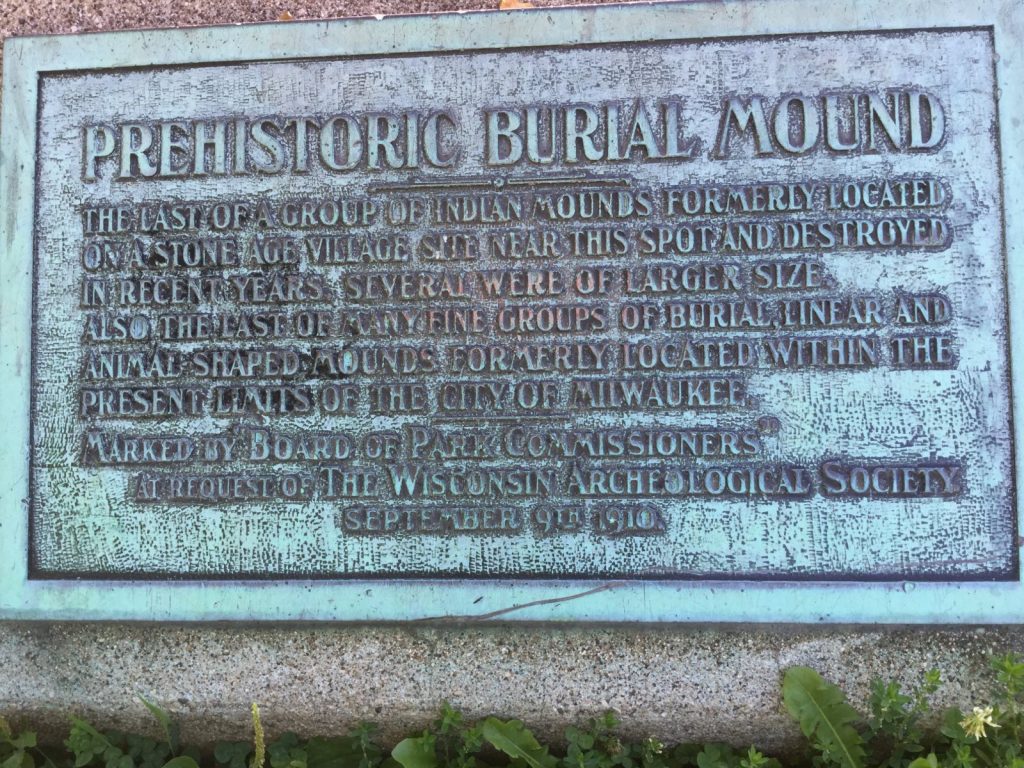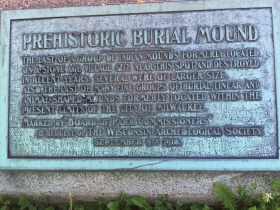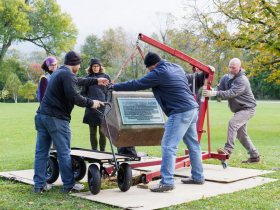Historical Marker Being Removed From Milwaukee’s Last Indigenous Burial Mound
Milwaukee County Parks removing marker in Lake Park.
More than 114 years after it was laid, a large historical marker in Lake Park has been removed.
The marker was encouraging park visitors to walk atop an Indigenous burial mound to read it, and thereby triggering an unintentional sign of disrespect.
The conical mound, about 40 feet in diameter and two feet tall, is located just east of the intersection of N. Lake Drive and E. Locust Street on the western edge of the park. The marker, a plaque atop a masonry block, was placed at the highest point on the mound.
Known as Lake Park Mound, it is believed to have been constructed up to 2,000 years ago. Several such mounds once dotted Milwaukee, but they were commonly disturbed earlier in the city’s development. Members of the Ho-Chunk Nation are believed to be descendants of the civilization that built the Lake Park mound.
Removing the marker, installed by the Wisconsin Archaeological Society in 1910, is an attempt to preserve the mound’s integrity. The society was also a key driver in the effort to remove it. A consultation was held with stakeholders in May.
“This is a significant first step toward rightly honoring the sacred nature of the burial mound and respecting the cultural traditions of Indigenous communities,” said Guy Smith, Parks director, in a statement. “We are dedicated to preserving the history of this land while ensuring that future generations can appreciate these important sites with the reverence they deserve.”
“Honoring the sacred nature of the burial mound in Lake Park is a vital part of our ongoing efforts to ensure our parks reflect respect for all cultures. The removal of this defacement is just the start to ensuring its preservation for generations to come,” said area Supervisor Sheldon Wasserman.
Bill Quackenbush, the Ho-Chunk Tribal Historic Preservation Officer, Amy Rosebrough and Taylor Lambrigger from the State Historic Preservation Office and Jennifer Haas, principal investigator for the UW-Milwaukee Cultural Resource Management Program, were consulted on the marker’s removal.
The Milwaukee County Foundation funded the archeological consultation associated with the project.
The mound is one of two reasons Lake Park was listed on the National Register of Historic Places in 1993. The other was it serves as an exemplification of the work of its famed designer, landscape architect Frederick Law Olmsted, Unfortunately, several other mounds are believed to have been destroyed in the park’s development. You can learn more about the 138-acre park in our 2020 walking tour column.
The only other remaining mound in Milwaukee County is located at State Fair Park in West Allis.
The city’s buried history has also recently come to public attention at Maryland Avenue Montessori School, about a half mile to the south of Lake Park. A project to construct a greenhouse on the property unearthed human remains earlier this month, the second time bones have been found on the property in three years. A cemetery was constructed on the site in the 1850s in conjunction with a cholera outbreak.
And while the mound marker was removed, the park has gained another man-made marker in recent years. A bust of Christian Wahl was reinstalled in the park last year, several decades after it was relocated to a different park that bore Wahl’s name.
Photos

Existing members must be signed in to see the interactive map. Sign in.
If you think stories like this are important, become a member of Urban Milwaukee and help support real, independent journalism. Plus you get some cool added benefits.
























We must respect the Indigenous Peoples Burial Mound. Removing the memorial plaque to preserve appears necessary.
Hadn’t seen this plaque before. Hope the marker is replaced at a neutral site.
Never knew that burial bounds were destroyed making the city & this park, now no one will. Acknowledging history is a form of respect, and removing this reminder will diminish knowledge of Indigenous presence in Milwaukee.